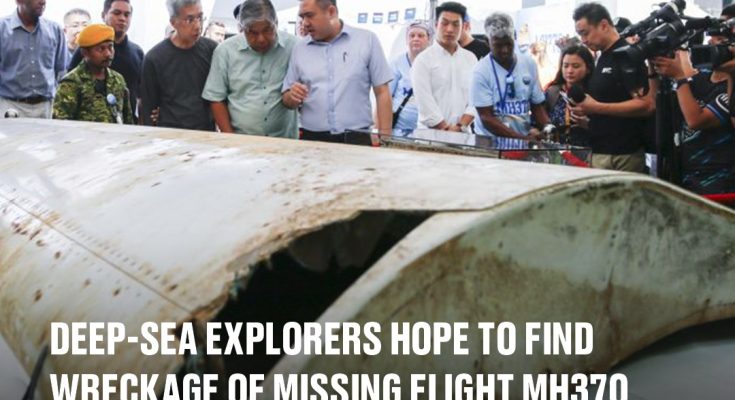Deep-sea explorers believe they may be able to locate the wreckage of missing MH370 flight, over 10 years after the aircraft vanished.
In the early hours of 8 March, 2014, the Malaysian Airlines flight departed from Kuala Lumpur on a journey north to Beijing, China.
However, MH370 would later vanish from the flight radar after takeoff, leading to one of the biggest mysteries in modern aviation history.
The plane’s last known location was in the Andaman Sea region after being picked up on a military radar.
Exactly what happened next isn’t known, however, the Air Accidents Investigation Branch (AAIB) would later conclude that MH370 most likely crashed into the Southern Indian Ocean, around 2,500km west of the Australian city of Perth, with all 239 passengers perishing in the accident.
Extensive searches of possible crash locations, yielded aircraft debris, while an absence of an official explanation for the plane’s crash has led to a number of theories doing the rounds online.
However, one US deep-sea explorer believes he will be able to solve the mystery.
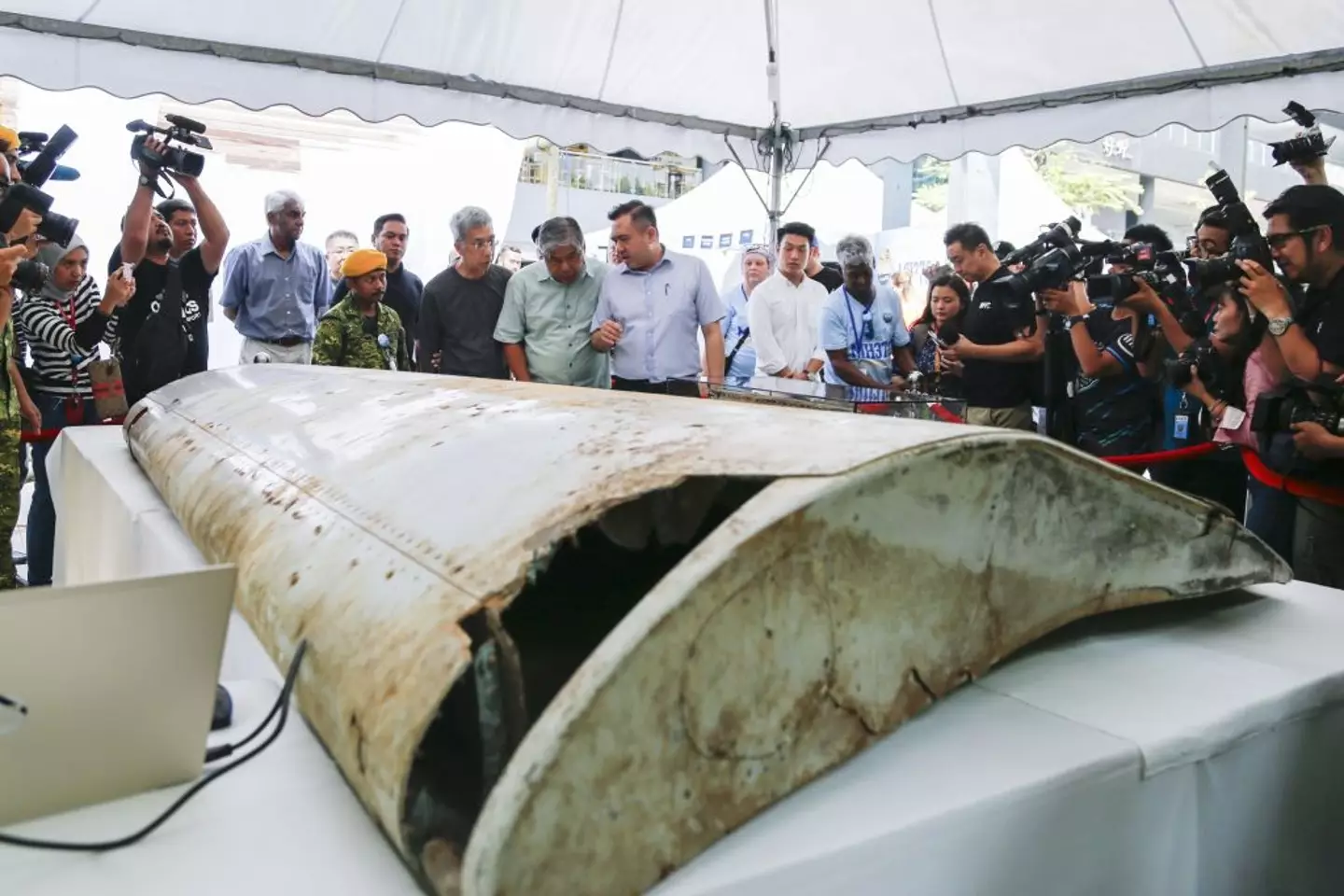
Debris identified as MH370 have since washed up in the ocean. (Adli Ghazali/Anadolu Agency/Getty Images)
Tony Romeo, Deep Sea Vision CEO, made headlines in January this year, claiming that he’d been able to locate the remains of Amelia Earhart‘s plane after it vanished in 1937.
Now he’s claiming he could do the same thing to find the missing MH370.
Speaking in an interview with Australian TV show 60 minutes back in March, former Air Force intelligence officer Romeo said he believed Deep Sea Vision would be capable of making a breakthrough in the case.
Explaining that he would do this by sending one of these underwater Hugin 6000 drones to the ocean-floor, Romeo said: “I think we can [find flight MH370]. I feel like we’ve proved our credibility, we’ve proved our competence. We’ve proved our ability to take equipment and use novel techniques.
Romero’s company has since been said to be preparing a proposal to submit to the Malaysian government for their search.
“I believe that the Malaysian government wants answers,” he continued.
“I refuse to believe that they do not want a huge accident, a huge crash like this to go unresolved. It just isn’t fair, it wouldn’t be fair to the families.”

Relatives of MH370 passengers commemorate their missing loved ones. (ARIF KARTONO/AFP via Getty Images)
Going on to explain how the drone would work at the bottom of the ocean, Romero added: “It [the drone] flies at 50 metres above the seafloor and it just goes back and forth, back and forth, back and forth.
“Big eyes, looking at everything it can see, sucks and stores data, comes back up to the surface, we pluck a thumb drive into it, pull the data out, and we watch it on a computer exactly what it looked at.”
Featured Image Credit: (Photo by ARIF KARTONO/AFP via Getty Images/Photo by Adli Ghazali/Anadolu Agency/Getty Images)
Topics: World News, MH370
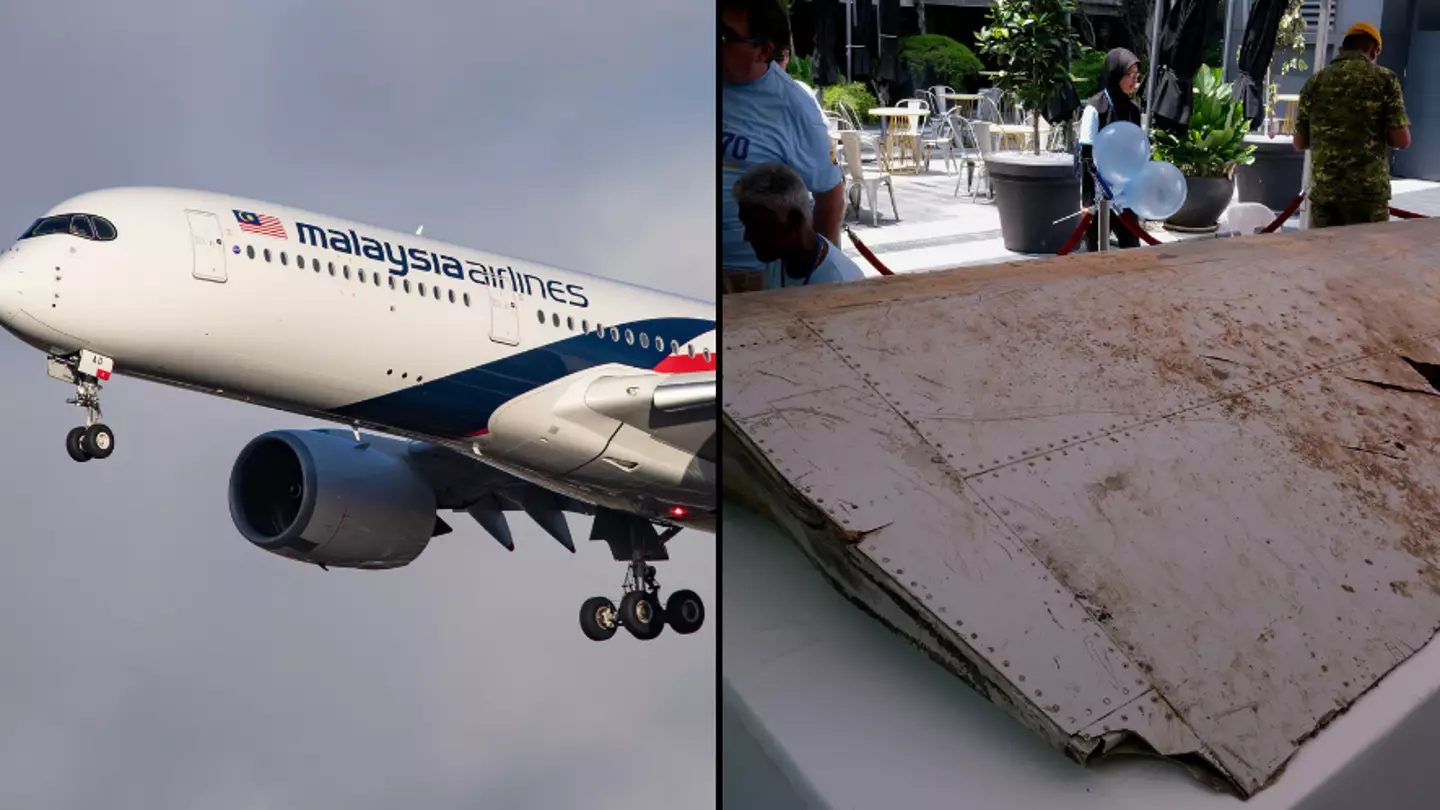
Over the years there have been a number of attempts to find the wreckage of Malaysia Airlines MH370, which disappeared on 8 March, 2014 with 239 people on board.
While the final audio from the cockpit is known and some parts of the wreckage have washed up to shore, the location where the plane went down is still a mystery.
Many groups have been part of attempts to locate the missing plane, with some saying they’d found new evidence that could help point towards the whereabouts of the aircraft.
It is still not known why the plane deviated from its course and we may never know, but that hasn’t stopped people from attempting to work out new ways to find the plane.
Robots, radio technology and many other methods have been employed as part of the search, but in the vacuum of concrete information some people have developed their own theories as to what happened.

Over 10 years on and people still don’t know what happened to their loved ones. (Supian Ahmad/NurPhoto via Getty Images)
One team of scientists from Cardiff University believe they might have something that could help, as research from them shows that signals captured on underwater microphones could be part of a plan to locate MH370.
The researchers indicated that violent ocean impacts such as plane crashes produce distinct signals which travel through the water.
Hydrophone technology on the seabed can record these signals, and the scientists believe that can give them a clearer idea of where MH370 went down.
“Our analysis shows clear pressure signals from previous aircraft crashes were detected on hydrophones, even at distances exceeding 3,000km,” Cardiff University’s Dr Usama Kadri said.
“In the case of MH370, official investigations concluded the aircraft must have crashed near the 7th arc – the point at which the last communication between the plane and INMERSAT occurred.”
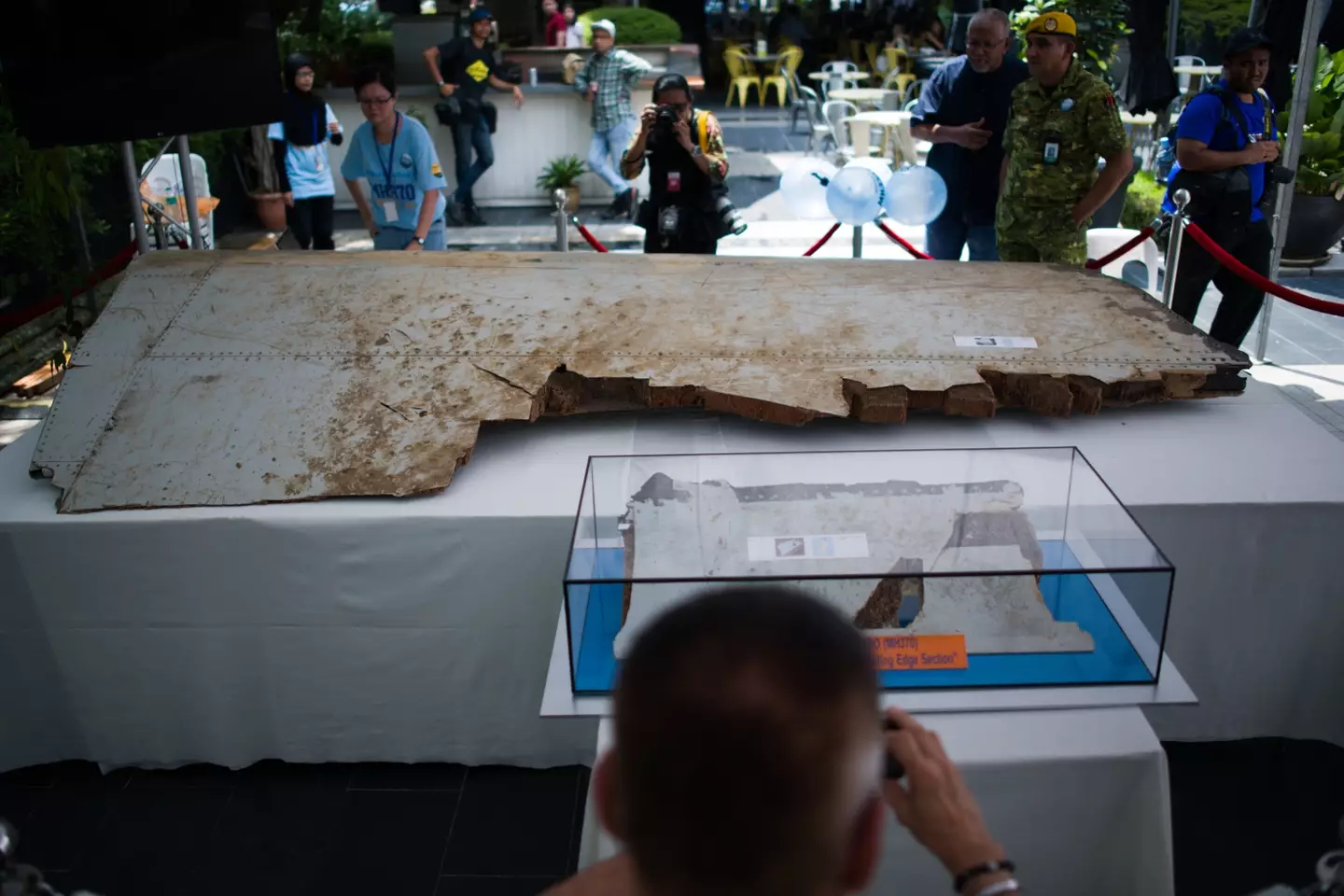
Some parts of the plane have been found, but most of the wreckage is still unaccounted for. (MOHD RASFAN/AFP via Getty Images)
He said that more research would be needed, but their study has recommendations for anyone looking for MH370 about where they ought to begin the search.
They suggest a series of controlled explosions or airguns should be used, with the signals produced then monitored by nearby equipment.
Dr Kadri said that such experiments could ‘significantly narrow down, almost pinpoint, the aircraft’s location’.
However, he also spoke of caution as he warned that should the signals be unrelated then it would mean authorities needed to ‘reassess the time frame or location established by their official search efforts to date’.
With over a decade having passed since the plane’s disappearance there are still efforts being made to track down MH370 and those who lost their lives on board.
Featured Image Credit: Nicolas Economou/NurPhoto via Getty/Mohd Samsul Mohd Said/Getty Images
Topics: MH370, Science, World News, UK News
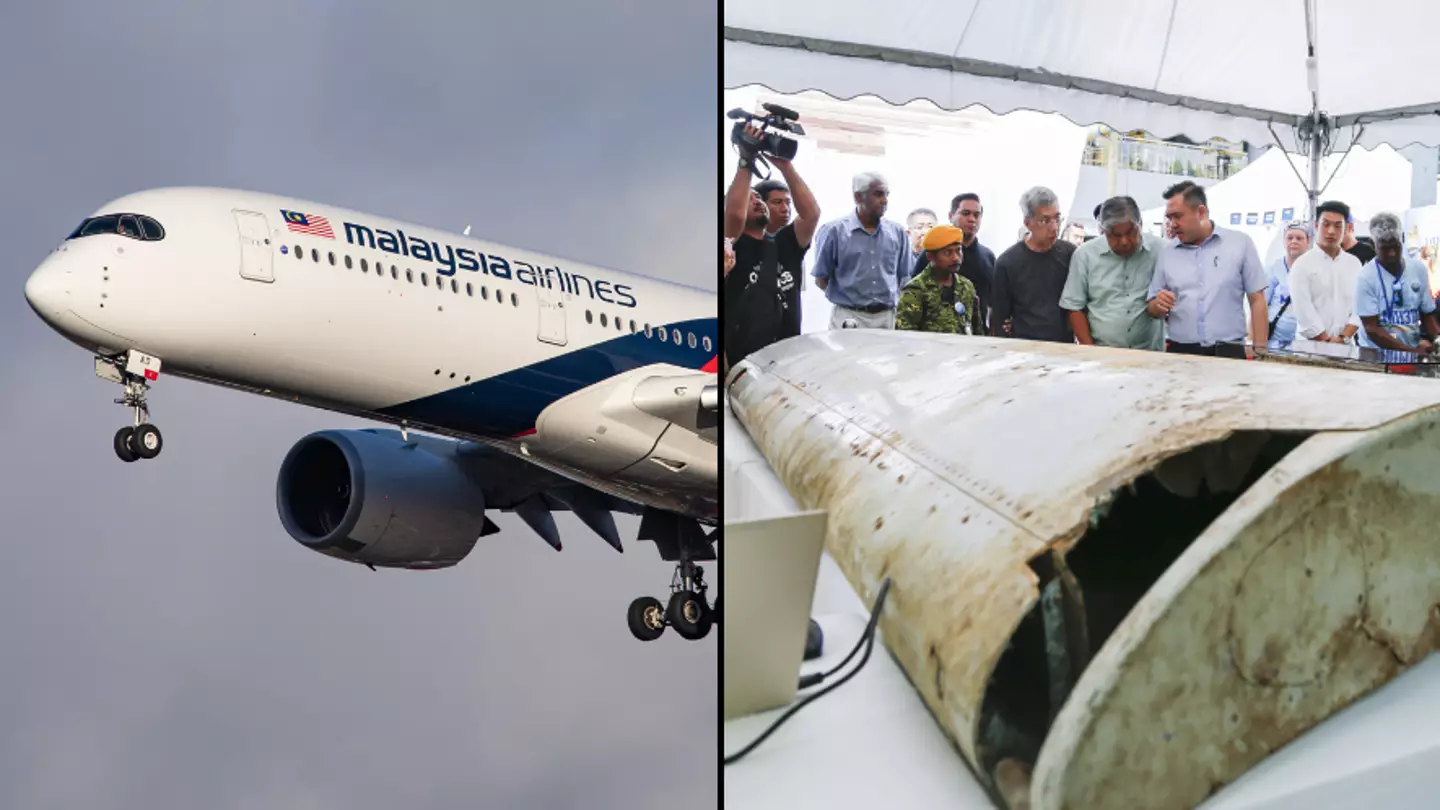
The mystery surrounding the infamous MH370 plane may finally have been solved following some new, and potentially vital, findings.
It’s been over 10 years since one of the most famous aviation mysteries in world history occurred.
On 8 March 2014, Malaysia Airlines flight MH370 was planning to make the journey from the Malaysian capital of Kuala Lumpur to the Chinese capital of Beijing, but instead mysteriously veered off course and disappeared with no explanation.
Despite some advancements in the investigation, a clear explanation of the flight’s disappearance is still missing, despite the ongoing efforts from teams around the world.
There were 227 passengers and 12 crew members onboard, all of whom have been presumed dead following the tragic incident.
It is well reported that the aircraft sent no distress calls, as it was later found that the Boeing 777 veered completely off its flight path, flying on an unknown path for another seven hours.
People still theorise about what may have happened on that fateful March day in 2014, with many believing that the answer lies on the plane’s black box flight recorders, which are still missing.
However, investigators now believe that an underwater pressure monitor may have aided in the search for the doomed aircraft.
The Malaysian government stated earlier this year that the flight ‘ended in the Southern Indian Ocean’, despite the fact that it has never been found.
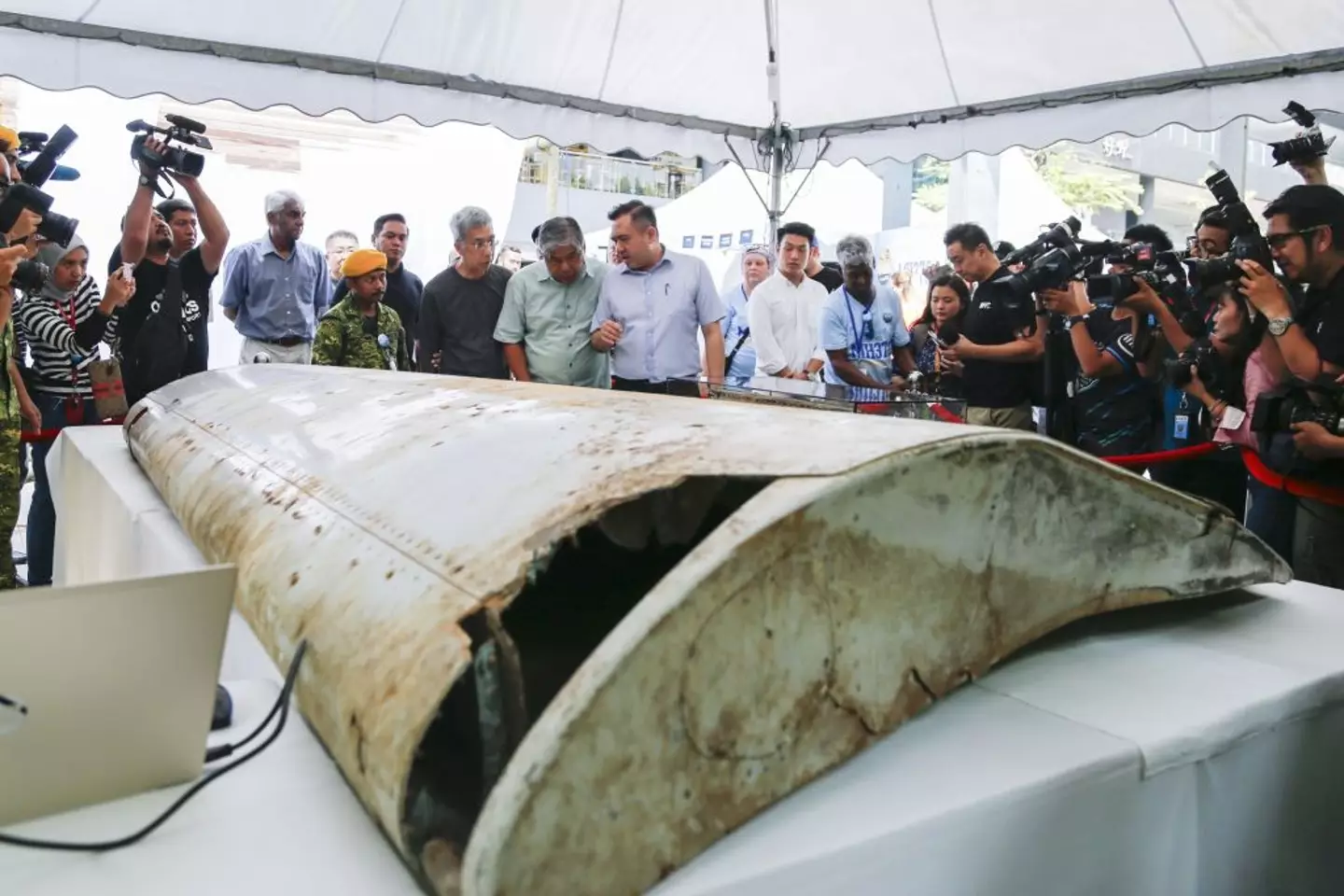
Researchers think we may be closer to solving the mystery of Malaysia Airlines Flight 370. (Adli Ghazali/Anadolu Agency/Getty Images)
Researchers at Cardiff University have gone through over 100 hours of underwater audio from historical aircraft accidents and a submarine disappearance, and have stumbled across something that could change everything in the investigation.
They have pinpointed an underwater signal that may have been caused by the impact of the Boeing plane hitting the waves upon landing.
Dr. Usama Kadri, a mathematician and engineer, has explained that a network of hydrophones that have been used to monitor pressure changes in the ocean as part of a nuclear explosion detection system could be the way to uncover the MH370 mystery.
Together with his team, he analysed the data from the time that the aircraft was said to have vanished over the Southern Indian Ocean, and found one unidentified event in an area known as the Seventh Arc, that was picked up at the Leeuiwn station.
“A 200-tonne aircraft crashing at a speed of 200 metres per second would release the kinetic energy equivalent to a small earthquake. It would be large enough to be recorded by hydrophones thousands of kilometres away,” Dr. Kadri wrote in The Conversation.
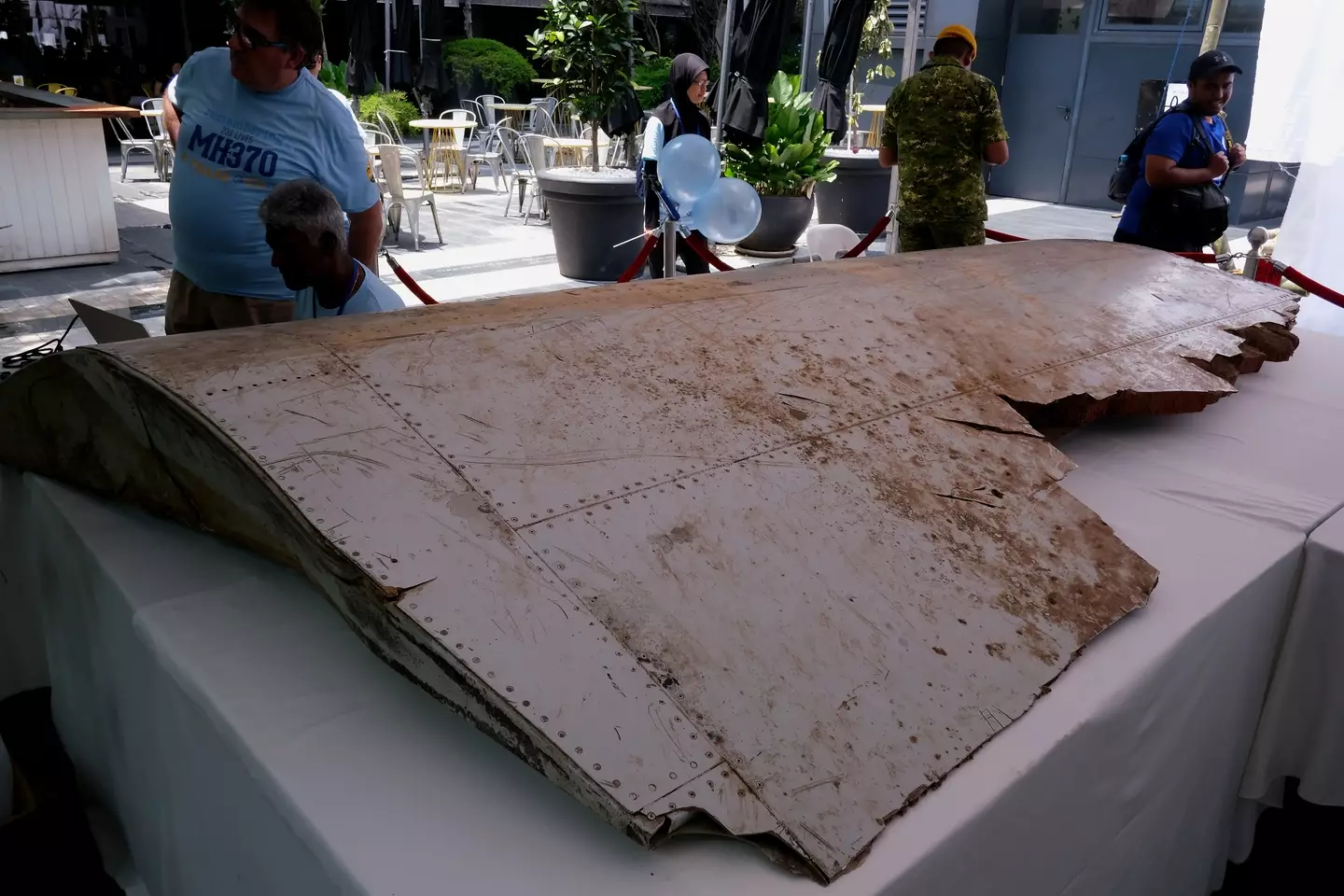
Only small parts of the wreckage have been uncovered. (Mohd Samsul Mohd Said/Getty Images)
He continued: “Given the sensitivity of the hydrophones, it’s highly unlikely that a large aircraft impacting the ocean surface wouldn’t leave a detectable pressure signature, particularly on nearby hydrophones.
“But unfavourable ocean conditions could potentially dampen or obscure such a signal.”
He said that the search as a whole would need to be looked at again to determine if these signals were directly related to the missing flight MH370.
Researchers have suggested a number of controlled underwater explosions to see if they can get a more exact location of the plane’s wreckage.
Featured Image Credit: Nicolas Economou/NurPhoto via Getty Images / Adli Ghazali/Anadolu Agency/Getty Images
Topics: MH370, Science, Technology, World News

Texas company Ocean Infinity claims to have found new evidence in the search for missing Malaysia Airlines flight MH370.
On 8 March, 2014, MH370 was flying over the South China Sea on route from Kuala Lumpur to Beijing when it disappeared from air traffic control radars.
There were 239 people, including 12 crew members, on board the Boeing 777 jet.
An investigation was immediately launched into the missing flight, which found that the aircraft had deviated from its planned route, although it is not known why.
After a three-year search across 46,000 square miles of ocean failed to locate the jet, official search efforts were suspended in January 2017.
A second search launched in January 2018 by private contractor Ocean Infinity also ended without success after six months.
Now, the Texas-based company, which uses robotic technology to obtain information from the ocean and seabed, claims to have scientific evidence of MH370’s final resting place.
It has proposed a ‘no-cure, no-fee’ search to the Malaysian government, in which it will only be paid if it secures a positive outcome.
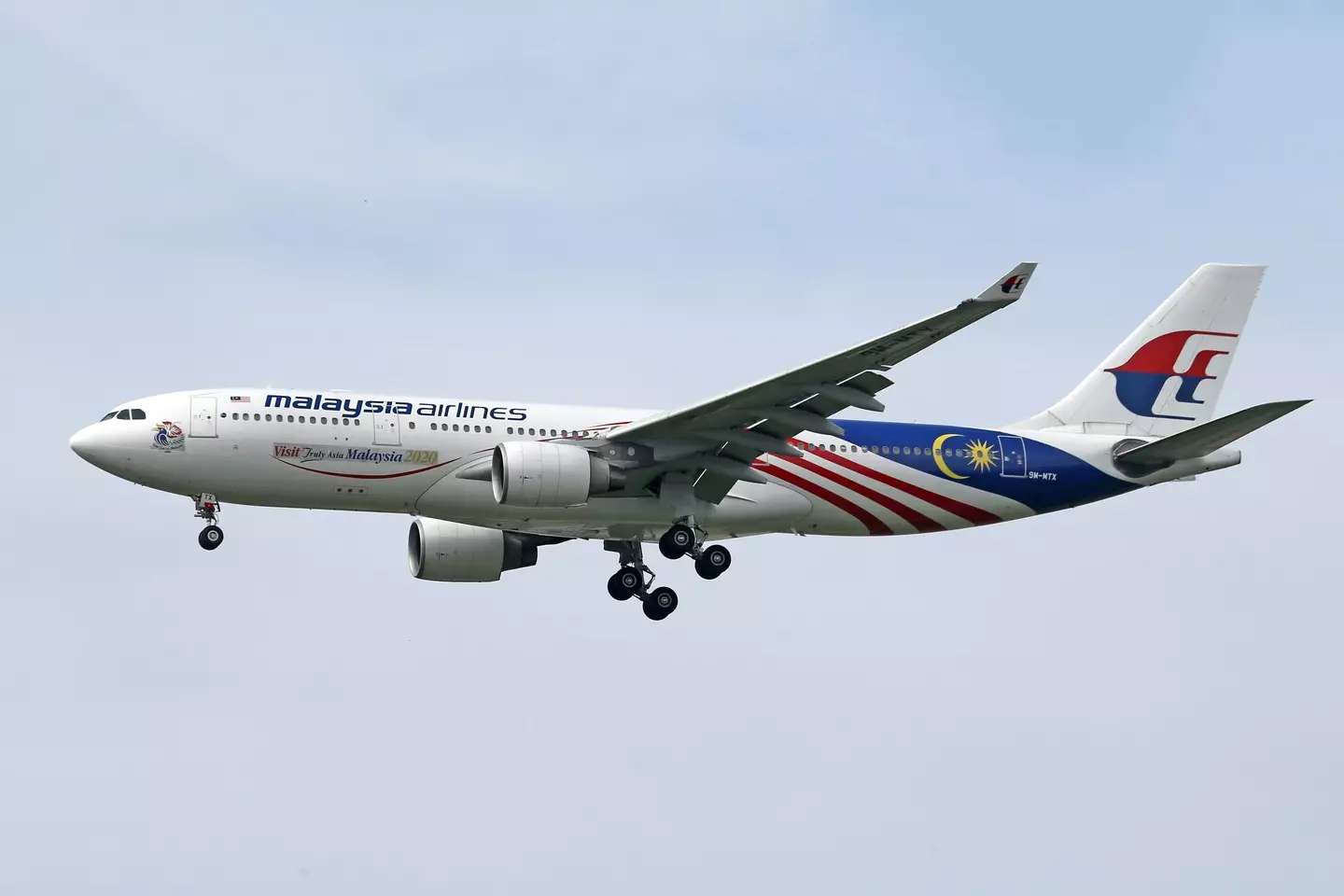
Pexels
Ocean Infinity CEO Oliver Plunkett said: “We now feel in a position to be able to return to the search for MH370, and have submitted a proposal to the Malaysian government.
“Finding MH370 and bringing some resolution for all connected with the loss of the aircraft has been a constant in our minds since we left the southern Indian Ocean in 2018.
“Since then, we have focused on driving the transformation of operations at sea; innovating with technology and robotics to further advance our ocean search capabilities.”
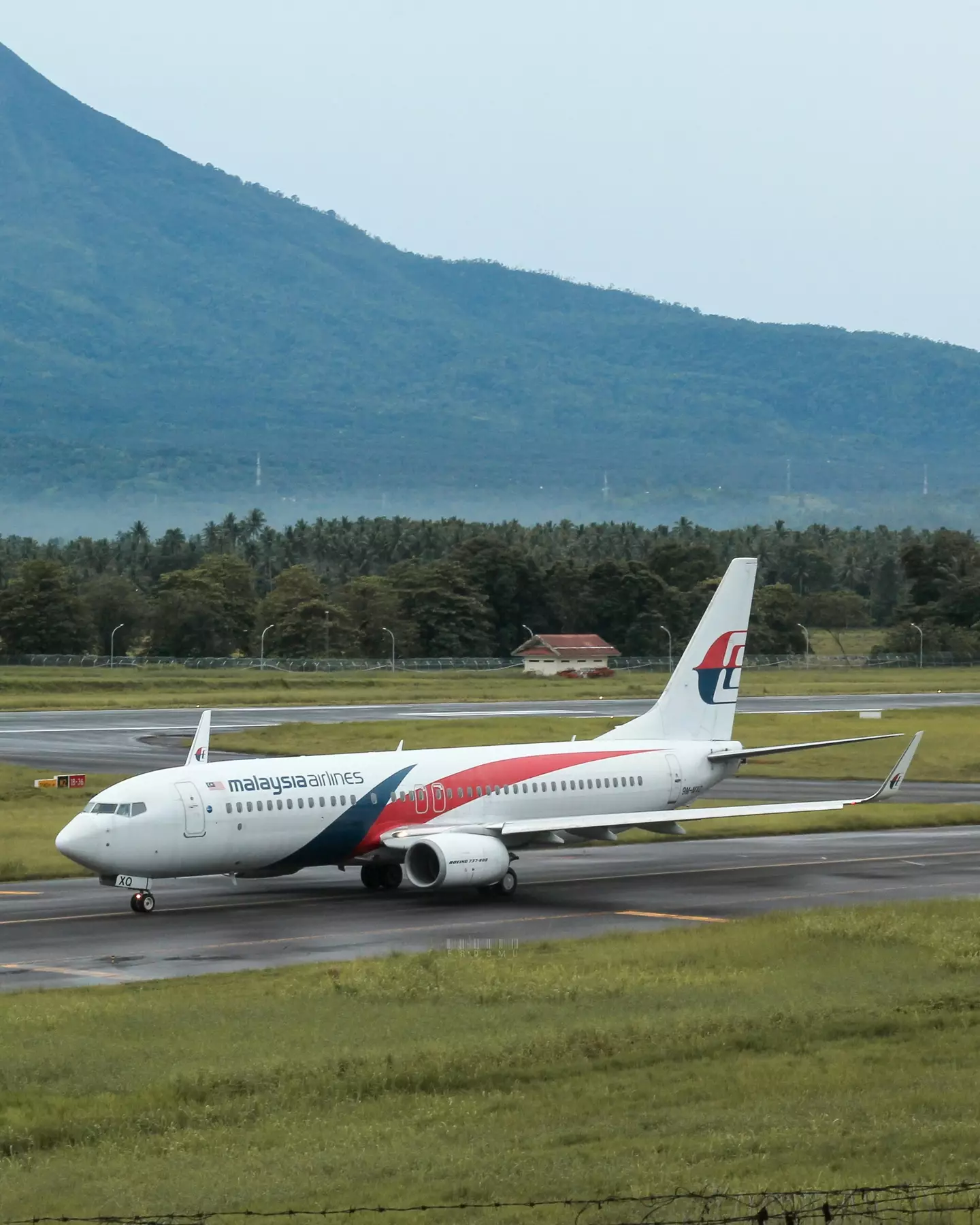
Pexels
Plunkett said that they’re analysing the data collected in hopes of being able to narrow down the search area for the missing flight.
“This search is arguably the most challenging, and indeed the most pertinent one out there,” he added.
“We’ve been working with many experts, some outside of Ocean Infinity, to continue analysing the data in the hopes of narrowing the search area down to one in which success becomes potentially achievable.
“We hope to get back to the search soon.”
And it seems the Malaysian government is open to idea of opening the search back up, with transport minister Anthony Loke telling reporters that he has invited the company to discuss their proposal with him.
“I am very, very confident that the government of Malaysia and cabinet will approve such a proposal,” he said.
Featured Image Credit: Nicolas Economou/NurPhoto/Getty Images/Adli Ghazali/Anadolu Agency/Getty Images
Topics: Travel, World News, MH370, Technology
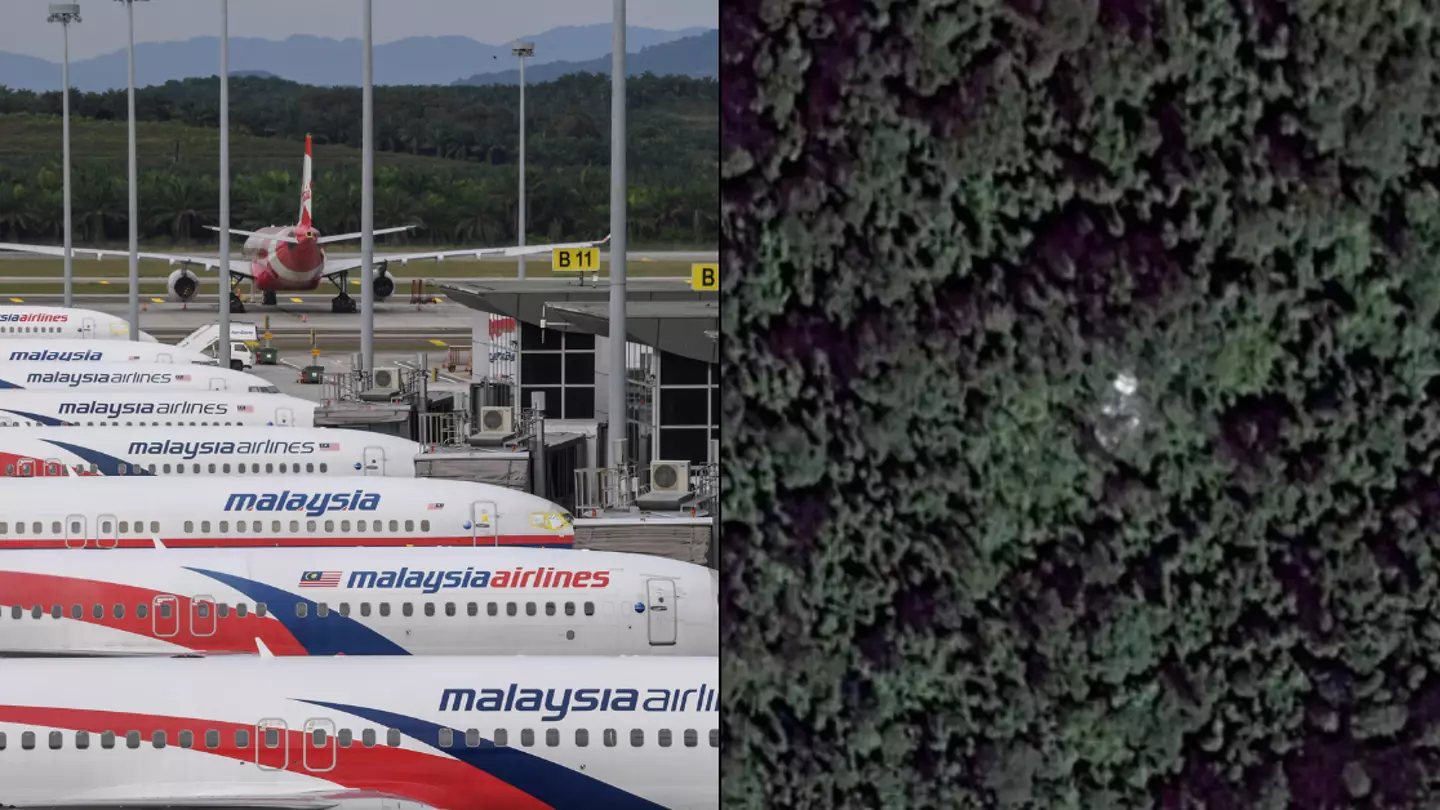
A haunting Google Maps photo seems to have convinced two brothers that they have found the debris for the missing Malaysia Airlines flight MH370.
Brothers Ian and Jackie Wilson were on a late night wander through the depths of Google Maps when they made a discovery so harrowing, they wanted to embark on a journey to solve one of the world’s biggest mysteries.
Back in 2016, Ian was on his laptop as he struggled to sleep, stumbling across something that looked like a while outline in Cambodia.
The tech expert spoke to the Daily Star at the time, saying: “I was up all night. I was having real trouble sleeping, and when I eventually came across that plane it was really surreal, the hairs stood on the back of my neck.”
What he found was enough for him to be convinced that he had solved the mystery around flight MH370, which saw the disappearance of a flight during its route from Malaysian capital Kuala Lumpur to Chinese capital Beijing on 8 March, 2014.
The plane mysteriously veered off course, disappearing without a trace along with the 239 people onboard – who are all presumed dead.
Though the aircraft sent no distress calls with the plane never being heard from again, the search for the Boeing 777 is on-going today, with experts hopeful with the help of new technology to find out what really happened.
But Ian himself thought he had done it despite governments and companies spending millions looking for the wreckage.
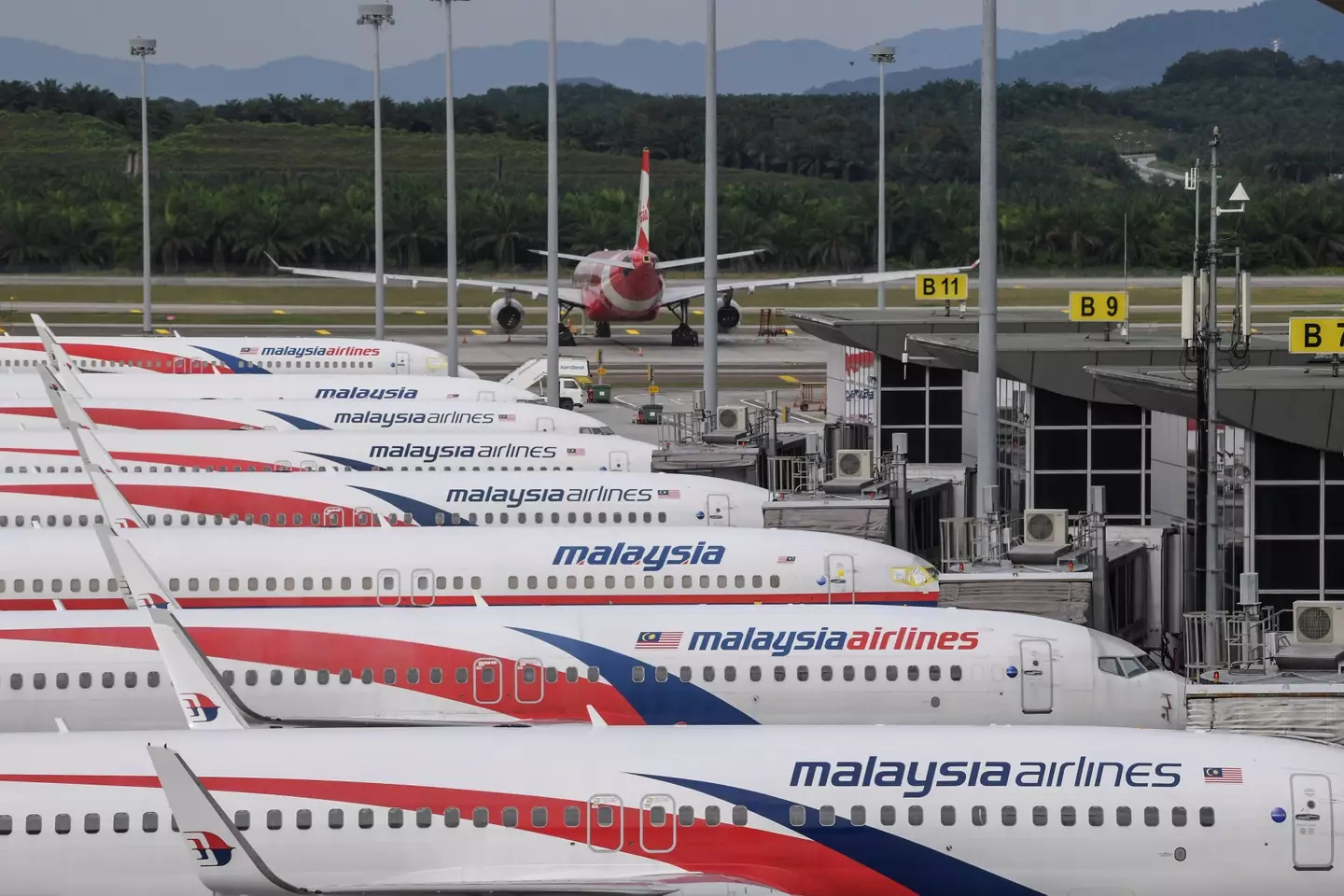
The cause of the plane’s disappearance is still in question. (Mat Zain/NurPhoto via Getty Images)
Upon finding the wreckage in Cambodia, he copied and pasted the co-ordinates in Google Earth, switching to 3D ground view.
From here, it looked like the plane was lying on the side of a mountain at a 45-degree angle, according to Ian – who then measured it on the app to find it to be about 70 metres long, only a bit longer than the Boeing 777-200 used for the MH370, with a gap between the tail and fuselage.
According to the Malaysia Transport Ministry, air traffic controllers enquired about the jet disappearing during a handover between Malaysia and Vietnam.
A private investigator of military tech company Unicorn Aerospace said that Ian’s findings were ‘significant’ and ‘clearly a match’, though he later said it was a plane caught mid-flight, which the Aviation Safety Network agreed with.
Debris of the plane was found in the Indian Ocean though, which disproves the brothers’ theory further.
But the pair still made their way to Cambodia to see it for themselves, and the trip ended up being more costly than planned.
Ian explained: “From every angle possible, it’s laying up against the mountain, and you can view it at ground level.
“I can’t take talk of it being airborne seriously at all. As I say it’s a program I use all the time and I’ve seen many planes in flight. If I thought this could be one of them I wouldn’t have bothered arranging vaccinations and saving money to go and find it.”
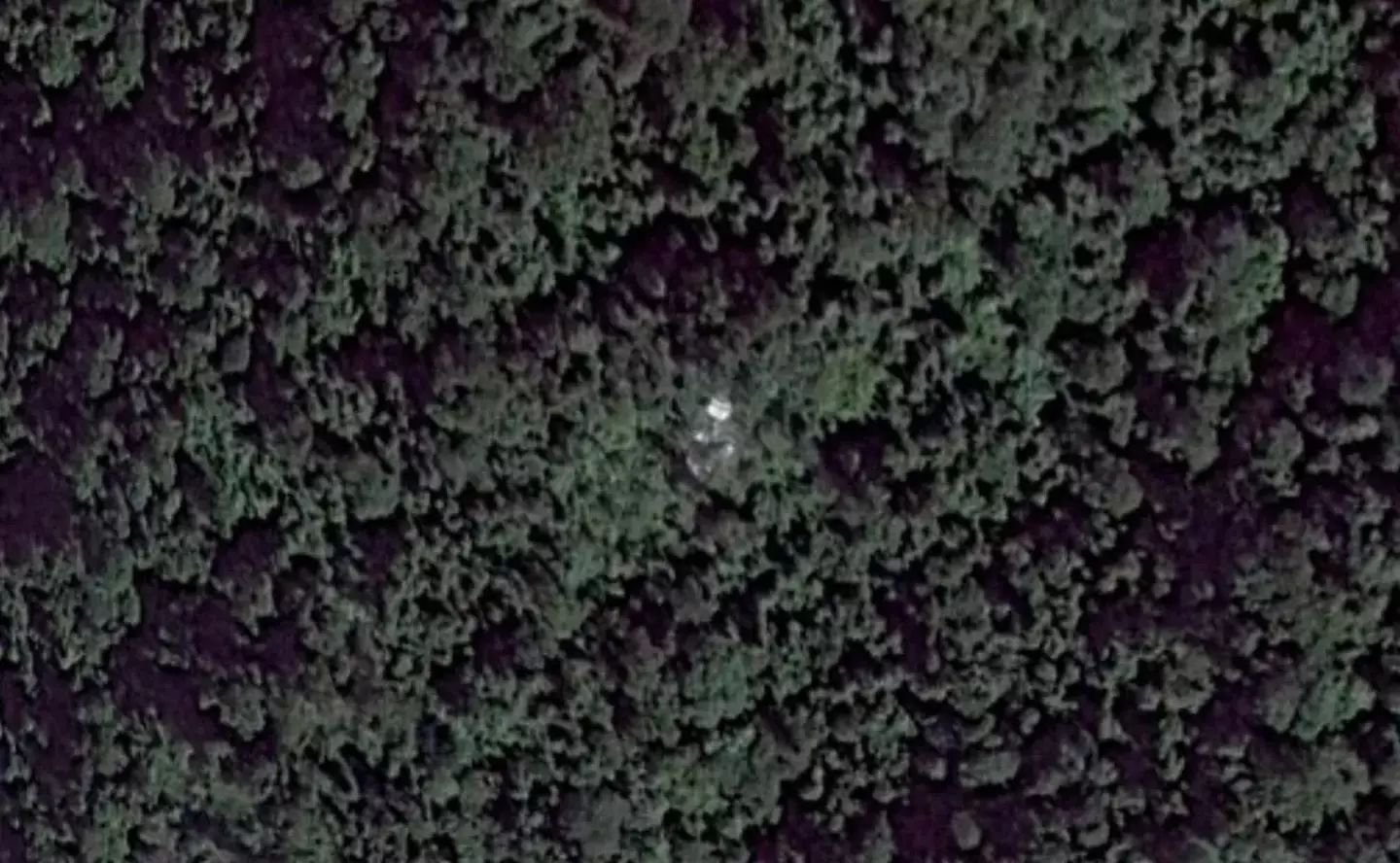
Ian found this, which prompted him to make the trip. (Google Maps)
Jackie accompanied him on the trip, where they had to venture through punishing conditions in the depths of the rainforest.
Ian further said in 2019: “It was so dangerous, every time we came to a river, where the waterfall would be crossing, it might only be 10 metres the other side but you’ve got no idea how deep it is, it’s about a foot deep and it goes up past your thighs.”
He stated that he wanted to go back, but money was the only thing stopping him.
Jackie then said in 2020 that he would ‘definitely’ visit the site again on Instagram.
Chinese satellite firm Chang Guang Satellite Technology Co Ltd reportedly assembled 10 satellites to investigate the area Ian identified, but found no signs of wreckage.
Following a $200million+ (£157 million) international search effort stretching over the years since the crash, the plane wreckage was never found, though debris has been found in the sea by Mauritius, Madagascar, Tanzania and South Africa.
Featured Image Credit: Mat Zain/NurPhoto via Getty Images / Google Maps
Topics: MH370, Google Maps, Technology, Travel

